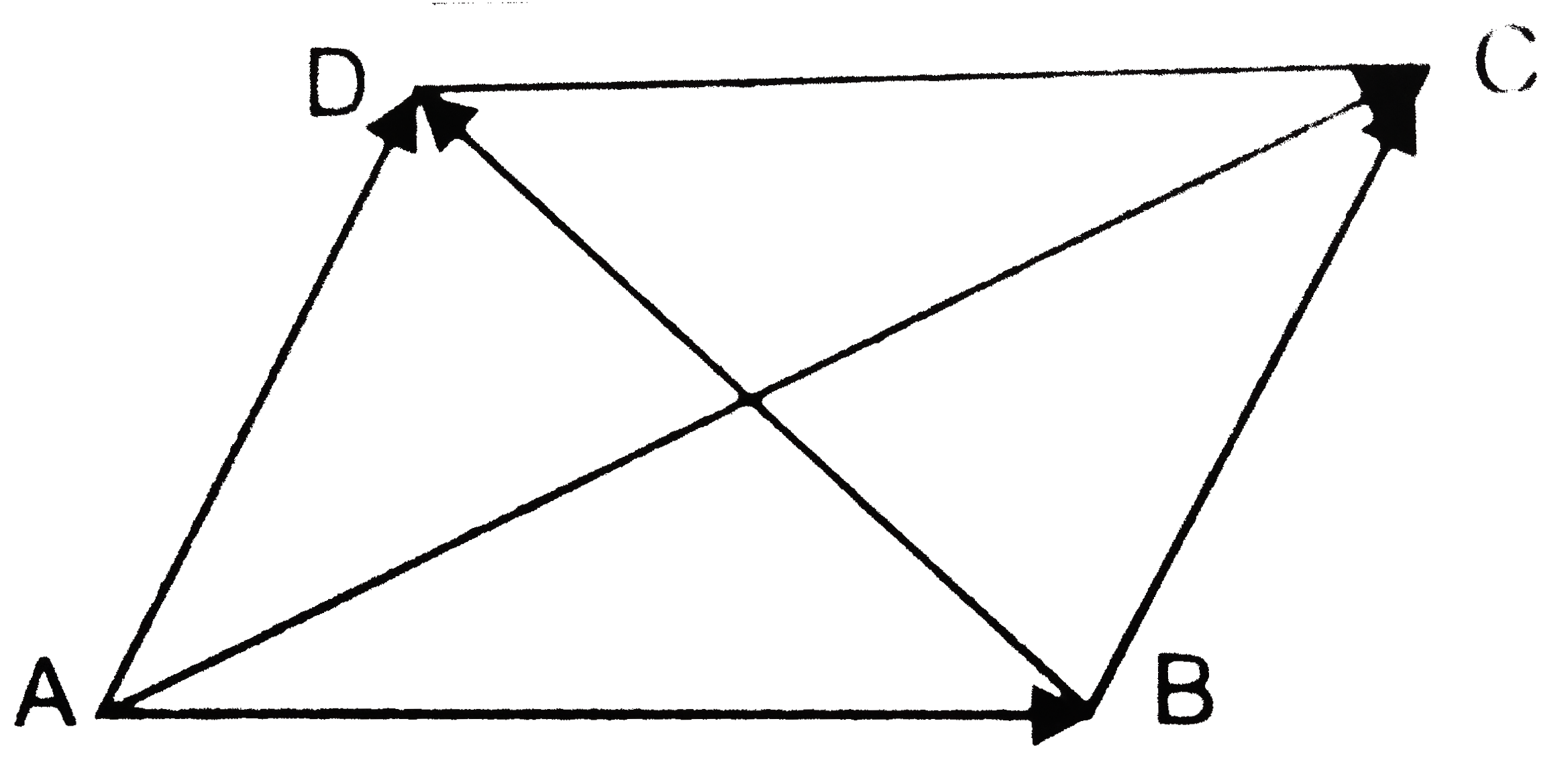ABCD is a parallelogram where AC and BD are the diagonals. If ∠BAD=60∘,∠ABD=90∘, then what is BD2 equal to ?
A)35AB2
B)3AB2
C)12AB2
D)23AB2
To solve the problem, we will follow these steps:
1. Understand the given information: We have a parallelogram ABCD with diagonals AC and BD. We know that ∠BAD = 60° and ∠ABD = 90°.
2. Draw the diagram: We will sketch the parallelogram ABCD, marking the angles accordingly.
- Label the vertices: A, B, C, D.
- Mark ∠BAD = 60° and ∠ABD = 90°.
3. Identify the triangle: We will focus on triangle ABD. Since we have two angles, we can find the third angle:
- ∠ADB = 180° - (∠BAD + ∠ABD) = 180° - (60° + 90°) = 30°.
4. Apply trigonometric ratios: In triangle ABD, we can use the tangent function:
- tan(60°) = opposite/adjacent = BD/AB.
- We know that tan(60°) = √3, so we can set up the equation:
√3=BDAB.
5. Solve for BD: Rearranging the equation gives us:
BD=√3⋅AB.
6. Square both sides: To find BD², we square both sides of the equation:
BD2=(√3⋅AB)2.
7. Calculate BD²: This simplifies to:
BD2=3⋅AB2.
8. Final answer: Thus, we conclude that:
BD2=3AB2.
- Label the vertices: A, B, C, D.
- Mark ∠BAD = 60° and ∠ABD = 90°.
- ∠ADB = 180° - (∠BAD + ∠ABD) = 180° - (60° + 90°) = 30°.
- tan(60°) = opposite/adjacent = BD/AB.
- We know that tan(60°) = √3, so we can set up the equation:
√3=BDAB.
BD=√3⋅AB.
BD2=(√3⋅AB)2.
BD2=3⋅AB2.
BD2=3AB2.
Similar Questions
Knowledge Check
ABCD is a parallelogram with AC and BD as diagonals. Then, A→C−B→D=
A4A→BB3A→BC2A→BDA→BABCD is a parallelogram and BD is a diagonal. ∠BAD=65∘ and ∠DBC=45∘, then m ∠BDC is :
A65∘B70∘C20∘Dnone of theseABCD is a quadrlateral in which BD and AC are diagonals then
AAB+BC+CD+AD<AC+BDBAB+BC+CD+DA>AC+BDCAB+BC+CD+DA=AC+BDDAB+BC+CD+DA>2(AC+BD)
ABCD is a parallelogram Fig. 2 (c ) .64. ACand(BD)areitsdiagonals.Showtˆ<br> (a) vec (AC) +vec (BD) =2 vec (BC)<br>(b)vec (AC) - vec (BD) =2 vec (AB)
 .
.
View SolutionIf ABCD is a parallelogram, then −−→AC−−−→BD=
View SolutionABCD is a parallelogram and BD is a diagonal. ∠BAD=65∘ and ∠DBC=45∘, then m ∠BDC is :
View SolutionABCD is a parallelogram and BD is a diagonal. ∠BAD=65∘ and ∠DBC=45∘, then m ∠BDC is :
View SolutionThe diagonals AC and BD of a parallelogram ABCD intersect each other at the point O. If ∠DAC=32∘and∠AOB=70∘, then ∠DBC is equal to
View Solution
